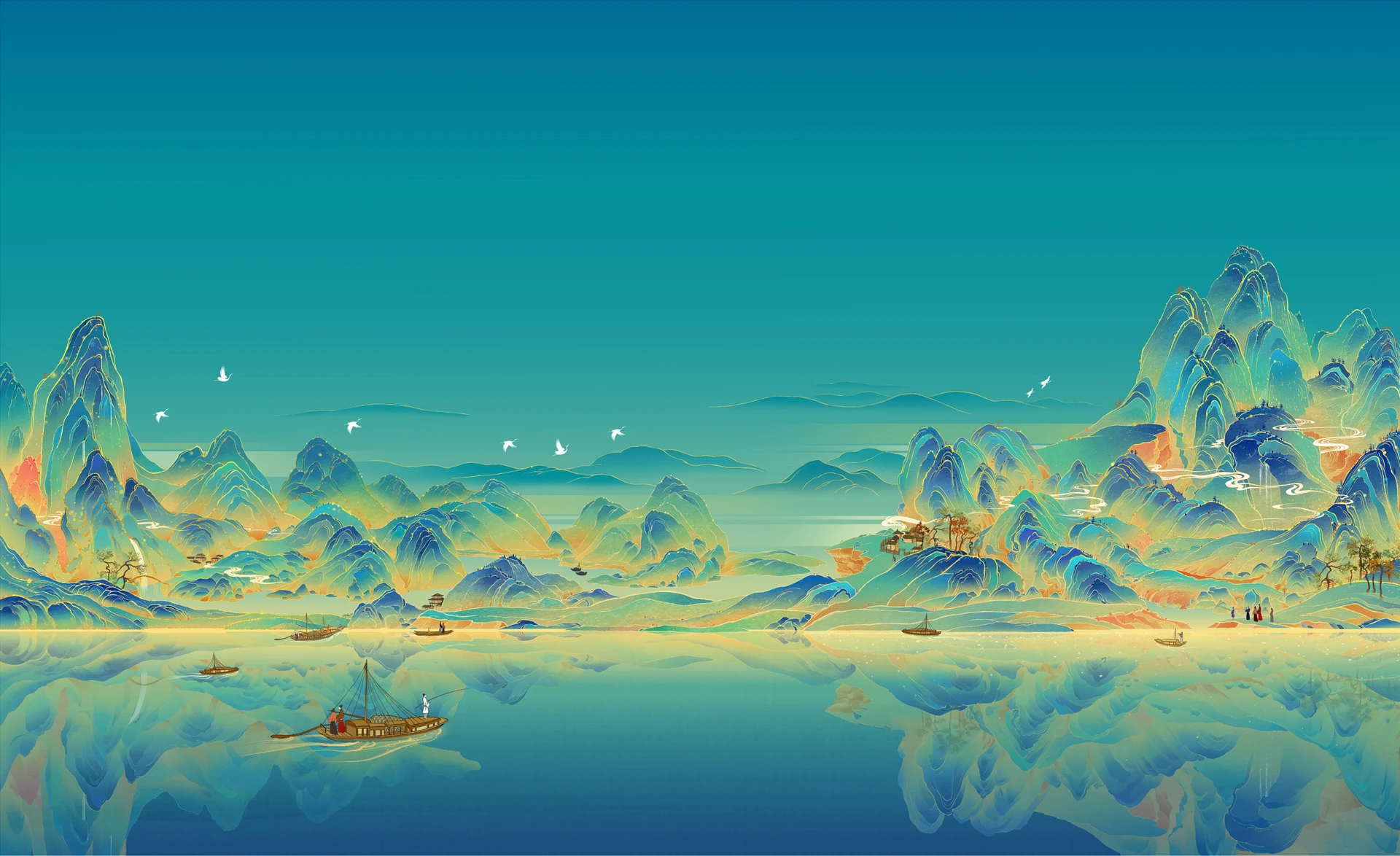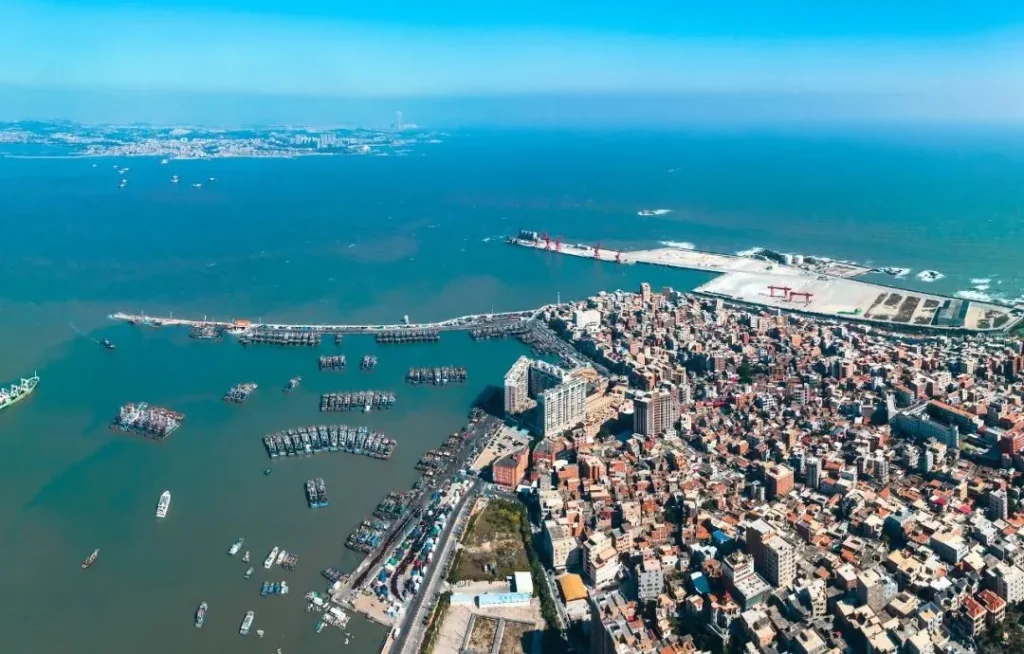
Destinations
This is your gateway to discovering China’s beauty! Whether it’s your first visit or a deeper exploration, we’ve got you covered.
Fujian
When you think of Fujian, what comes to mind? The fragrant tea of Wuyi Mountain (武夷山), or the crashing waves of Xiamen (厦门)? This “pearl” on China’s southeastern coast has so much more to offer! It boasts stunning mountains and seascapes, a rich cultural heritage, and countless delicious foods and fun activities. It’s definitely a place you won’t want to leave once you arrive.

1. A Gallery of Mountains and Sea—A Feast for the Eyes!

Fujian’s landscape is unique, often described as “eight parts mountain, one part water, and one part farmland.” In the northwest, you’ll find the dramatic peaks and cliffs of the Wuyi Mountains, contrasting sharply with the long coastline and sandy beaches in the southeast. It’s also one of China’s “greenest” provinces, with incredibly high forest coverage and excellent air quality—perfect for enjoying some “Fresh Fujian” oxygen! The 3,752-kilometer coastline is a treasure trove, featuring natural wonders like the bioluminescent “Blue Tears” beach on Pingtan Island (平潭岛) and the picturesque sunrise light and shadows over the Xiapu mudflats (霞浦滩涂), making it a paradise for photographers.
2. Living Culture Within Reach

Fujian is a vibrant hub of culture, like a “grand view garden” of intangible heritage! Ancient Nanyin music (南音) and the incredible wooden arch bridge building techniques are world-class treasures. You’ll also find unique local customs like the flower hairpins worn by Xunpu women (蟳埔簪花围) and Min Opera (闽剧). You can try your hand at making Dehua white porcelain (德化白瓷) or experience Hakka life in the Yongding Tulou (永定土楼). Sip tea or coffee in an old Quanzhou house (泉州古厝) converted into a café and feel the cool blend of tradition and modernity. In Fuzhou’s Three Lanes and Seven Alleys (三坊七巷), Ming and Qing dynasty buildings house trendy digital theaters, bringing history to life in fun ways.
3. A Taste of Fujian—Flavors from Mountain and Sea

Fujian cuisine is all about the “essence of mountain and sea”—freshness is key! Think of the springy and savory Fuzhou fish balls (福州鱼丸) or the down-to-earth deliciousness of Shaxian snacks (沙县小吃). Take a sip of Wuyi rock tea (武夷岩茶) and taste its unique mineral “rock bone and floral fragrance” (岩骨花香). Many new-style tea shops are putting creative twists on famous teas like Da Hong Pao (大红袍). And of course, you can’t miss the star of Min cuisine (闽菜)—”Buddha Jumps Over the Wall” (佛跳墙), a luxurious soup combining dozens of delicacies, a true taste of culinary harmony.
4. Playing It Cool! Innovative Culture and Tourism

Fujian knows how to have fun, mixing culture and tourism in exciting new ways. Enjoy nighttime light shows on a Min River (闽江) cruise or browse lively intangible heritage night markets. Love sports? Run a marathon along routes connecting Tulou earthen buildings and the coastline—a fantastic way to see the sights while staying active. Need to relax? Forest wellness retreats and hot spring resorts offer perfect escapes. Plus, Fujian’s high-speed rail network connects every city, and smart tourism services make in-depth travel easy and enjoyable.
5. An Open Spirit Welcomes You

Historically, Fujian was the starting point of the Maritime Silk Road, and Quanzhou was a bustling international port where “the sounds of the rising tide mingled with merchants from ten thousand nations.” This open and inclusive spirit endures today. You’ll find a strong overseas Chinese culture, deep-rooted Mazu belief (妈祖信仰), and diverse cultures living side-by-side. You can see the marks of this cultural fusion in the Tulou architecture and the Nanyang-style old streets. Convenient visa-free transit policies and international-standard services now make it even easier for global travelers to visit.
Traveling in Fujian is about slowing down and savoring the details. It’s about the quiet moment with a cup of tea, the thousand-year history within an earthen building, the whisper of the waves, and the breath of the forest. With heartfelt hospitality, Fujian invites you to a profound dialogue between mountains, sea, and culture.
Recommended Attractions and Activities:
I. Must-Visit 5A Core Attractions
- Gulangyu Island (鼓浪屿, Xiamen): World Cultural Heritage site, “Garden on the Sea,” international architecture, Piano Museum, panoramic view from Sunlight Rock (日光岩). Experience: Stroll through Shuzhuang Garden (菽庄花园), try oyster omelets (海蛎煎) and sea worm jelly (土笋冻).
- Wuyi Mountain (武夷山, Nanping): World Cultural and Natural Heritage site, Danxia landforms, bamboo rafting on the Nine-Bend River (九曲溪), Da Hong Pao tea plantations (大红袍茶园). Experience: Watch the “Impression Da Hong Pao” (印象大红袍) landscape show, taste Zhuzi Filial Piety Cake (朱子孝母饼) and Langu Smoked Goose (岚谷熏鹅).
- Fujian Tulou (福建土楼, Yongding·Nanjing): World Cultural Heritage “Oriental Ancient Castles,” Yunshuiyao Ancient Trail (云水谣古道), Tianluokeng Tulou Cluster (“Four Dishes and One Soup” – 四菜一汤). Experience: Watch Hakka Tulou building demonstrations, taste stuffed tofu (酿豆腐) and plum wine (梅子酒).
- Meizhou Island Mazu Cultural Tourism Zone (湄洲岛妈祖文化旅游区, Putian): Origin of Mazu culture (妈祖文化), pilgrimage to the Ancestral Temple (祖庙), Golden Beach (黄金沙滩). Experience: Mazu Birthday celebrations (农历三月廿三), watch the “Auspicious Meizhou” (祥瑞湄洲) show.
- Qingyuan Mountain (清源山, Quanzhou): Taoist sacred site, Laojun Rock (老君岩, largest Taoist stone carving from the Song Dynasty), overlook Quanzhou. Experience: See the Thousand-Hand Rock carvings (千手岩石刻), visit the Master Hong Yi Memorial Hall (弘一法师纪念馆).
II. Cultural Immersion & Intangible Heritage
- Quanzhou Intangible Heritage Tour: Experience Xunpu women’s floral headdresses (蟳埔簪花围), try making Dehua white porcelain (德化白瓷), visit Kaiyuan Temple (开元寺) and West Street (西街) (try Zongzi – 肉粽, Misua – 面线糊).
- Fuzhou’s Three Lanes and Seven Alleys (福州三坊七巷): Explore Ming/Qing architecture (Lin Zexu Memorial Hall, Bing Xin’s Former Residence), enjoy light shows and Min Opera (闽剧). Food: Tongli Rouyan (同利肉燕), Yonghe Fish Balls (永和鱼丸), Buddha Jumps Over the Wall (佛跳墙).
- Min Opera & Puppetry (闽剧与木偶戏): Watch traditional Min Opera in Fuzhou or Yongding, see string puppetry in Quanzhou.
III. Natural Wonders & Outdoor Adventures
- Baishuiyang – Mandarin Duck Creek (白水洋-鸳鸯溪, Ningde): Rare “Water Plaza” riverbed, watch mandarin ducks in autumn. Activities: Water sliding/rafting, experience She ethnic culture (畲族风情).
- Taimu Mountain (太姥山, Ningde): World Geopark “Immortal Capital on the Sea,” granite peaks and strange rocks (like Couple Peaks – 夫妻峰), origin of white tea. Challenges: Via ferrata climbing, glass skywalk.
- Taining Dajin Lake (泰宁大金湖, Sanming): Danxia landscape, raft down Shangqing Creek (上清溪), explore Zhaixia Grand Canyon (寨下大峡谷).
IV. New Culture & Tourism Experiences
- City Boat (Fuzhou): Take the “Fu Ju Hao” (福桔号) electric boat for a night cruise on the Min River (闽江), or try kart boats on Jin’an Lake (晋安湖).
- Immersive Digital Theaters: Fuzhou’s Three Lanes and Seven Alleys (Tang Dynasty street performance), Yongding Tulou (“Minnan Charm & Song Dynasty Rhyme” drama – 闽风宋韵).
- Ecological Wellness: Zhouning Carp Creek (周宁鲤鱼溪, ancient village coexisting with stream), Wuyi Mountain National Park (hike Scenic Trail No. 1).
V. Food Map
- Minnan Flavors (闽南风味): Satay Noodles (沙茶面, Xiamen), Sea Worm Jelly (土笋冻, Quanzhou), Chongwu Fish Rolls (崇武鱼卷, Hui’an).
- Hakka Specialties (客家特色): Salt-baked Chicken (盐焗鸡, Yongding), White Duck Soup (白鸭汤, Liancheng), Taro Dumplings (芋子饺, Longyan).
- Tea Culture (茶文化): Wuyi Rock Tea (武夷岩茶), Fuding White Tea (福鼎白茶), Fuzhou Jasmine Tea (福州茉莉花茶).